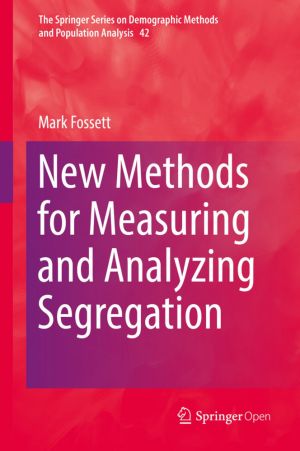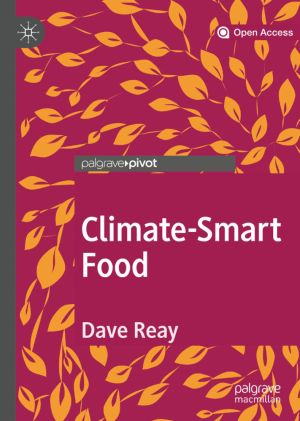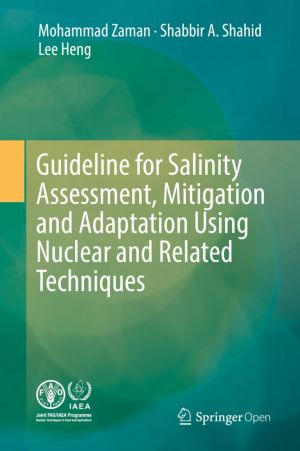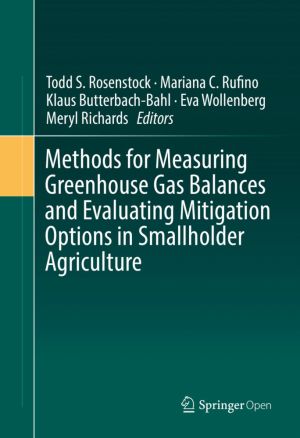Methods for Measuring Greenhouse Gas Balances and Evaluating Mitigation Options in Smallholder Agriculture
by Todd S. Rosenstock, Mariana C. Rufino, Klaus Butterbach-Bahl, Lini Wollenberg, Meryl Richards
DescriptionDetailsHashtagsReport an issue
quantifying greenhouse gas emissions and removals in smallholder agricultural systems
and comparing options for climate change mitigation based on emission
reductions and livelihood trade-offs. Globally, agriculture is directly
responsible for about 11% of annual greenhouse gas (GHG) emissions and induces
an additional 17% through land use change, mostly in developing countries.
Farms in the developing countries of sub-Saharan Africa and Asia are
predominately managed by smallholders, with 80% of land holdings smaller than
ten hectares. However, little to no information exists on greenhouse gas
emissions and mitigation potentials in smallholder agriculture. Greenhouse gas measurements in agriculture
are expensive, time consuming, and error prone, challenges only exacerbated
by the heterogeneity of smallholder systems and landscapes. Concerns over
methodological rigor, measurement costs, and the diversity of approaches,
coupled with the demand for robust information suggest it is germane for the
scientific community to establish standards of measurements for quantifying GHG
emissions from smallholder agriculture. Standard guidelines for use by
scientists, development organizations will help generate reliable data on
emissions baselines and allow rigorous comparisons of mitigation options. The
guidelines described in this book, developed by the CGIAR Research Program on
Climate Change, Agriculture, and Food Security (CCAFS) and partners, are
intended to inform anyone conducting field measurements of agricultural
greenhouse gas sources and sinks, especially to develop IPCC Tier 2 emission
factors or to compare mitigation options in smallholder systems. 






Book Description
This book provides standards and guidelines forquantifying greenhouse gas emissions and removals in smallholder agricultural systems
and comparing options for climate change mitigation based on emission
reductions and livelihood trade-offs. Globally, agriculture is directly
responsible for about 11% of annual greenhouse gas (GHG) emissions and induces
an additional 17% through land use change, mostly in developing countries.
Farms in the developing countries of sub-Saharan Africa and Asia are
predominately managed by smallholders, with 80% of land holdings smaller than
ten hectares. However, little to no information exists on greenhouse gas
emissions and mitigation potentials in smallholder agriculture. Greenhouse gas measurements in agriculture
are expensive, time consuming, and error prone, challenges only exacerbated
by the heterogeneity of smallholder systems and landscapes. Concerns over
methodological rigor, measurement costs, and the diversity of approaches,
coupled with the demand for robust information suggest it is germane for the
scientific community to establish standards of measurements for quantifying GHG
emissions from smallholder agriculture. Standard guidelines for use by
scientists, development organizations will help generate reliable data on
emissions baselines and allow rigorous comparisons of mitigation options. The
guidelines described in this book, developed by the CGIAR Research Program on
Climate Change, Agriculture, and Food Security (CCAFS) and partners, are
intended to inform anyone conducting field measurements of agricultural
greenhouse gas sources and sinks, especially to develop IPCC Tier 2 emission
factors or to compare mitigation options in smallholder systems.
This open book is licensed under a Creative Commons License (CC BY). You can download Methods for Measuring Greenhouse Gas Balances and Evaluating Mitigation Options in Smallholder Agriculture ebook for free in PDF format (6.1 MB).
Book Details
Title
Methods for Measuring Greenhouse Gas Balances and Evaluating Mitigation Options in Smallholder Agriculture
Publisher
Springer
Published
2016
Pages
217
Edition
1
Language
English
ISBN13
9783319297927
ISBN10
3319297929
ISBN13 Digital
9783319297941
ISBN10 Digital
3319297945
PDF Size
6.1 MB
License

Related Books

This open book is an outcome of the collaboration between the Soil and Water Management & Crop Nutrition Section, Joint FAO/IAEA Division of Nuclear Techniques in Food and Agriculture, Department of Nuclear Sciences and Applications, International Atomic Energy Agency (IAEA), Vienna, Austria, and the German Science Foundation research unit DASI...

This book introduces new methods for measuring and analyzing residential segregation. It begins by placing all popular segregation indices in the "difference of group means" framework wherein index scores can be obtained as simple differences of group means on individual-level residential attainments scored from area racial composition. ...

Get the most out of this foundational reference and improve the productivity of your software teams. This book collects the wisdom of the 2017 "Dagstuhl" seminar on productivity in software engineering, a meeting of community leaders, who came together with the goal of rethinking traditional definitions and measures of productivity.
The ...

This book asks just how climate-smart our food really is. It follows an average day's worth of food and drink to see where it comes from, how far it travels, and the carbon price we all pay for it. From our breakfast tea and toast, through breaktime chocolate bar, to take-away supper, Dave Reay explores the weather extremes the world's fa...

This open access book examines the educational conditions that support cultures of exploration in kindergartens. It conceptualises cultures of exploration, whether those cultures are created through children's own engagement or are demanded of them through undertaking specific tasks within different institutional settings. It shows how the con...

This book is an outcome of the collaboration between the Soil and Water Management & Crop Nutrition Section, Joint FAO/IAEA Division of Nuclear Techniques in Food and Agriculture, Department of Nuclear Sciences and Applications, International Atomic Energy Agency (IAEA), Vienna, Austria, and the International Center for Biosaline Agricultur...

